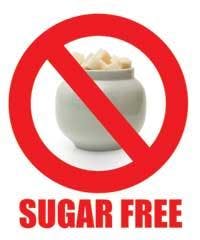Time for a progress report on how we're easing out the sugar
by Connie L. Sidder, RDH, BS
So, I was wondering, how are we coming along on recommending xylitol to our patients? In January of 2008, the California Dental Hygienists Association took a position to recommend xylitol to prevent tooth decay.1 Currently, the hygiene associations in Hawaii and Arizona both endorse the use of xylitol to prevent decay. The University of Washington is conducting a study to help determine the dose-response or frequency response of xylitol.2 They are trying to determine if eating xylitol gummy bears three times a day (because no gum is allowed in school) would be enough for kindergarteners to protect their six-year molars.3 In one study, the efficacious dosage of xylitol was researched. It concluded that between 6.88 grams and 10.32 grams per day were necessary to protect the molars. The other frequency response determined that at least three uses per consumption period using chewing gum were necessary. To put it simply, if one were to chew gum after meals, in quantities that amounted to two grams per serving, one could squeak by on the xylitol scale.
Of course, there are many ways to achieve six to 10 grams of xylitol per day. Gum is not the only thing that can be consumed. Many online companies offer mints and bulk xylitol.4 In trying to practice what I preach, I have devised a simple way to achieve six to 10 grams of xylitol per day. Remember that it is not okay to skip days. I have a dose at breakfast. I either sprinkle a cinnamon-xylitol mixture on my toast, or I make bread with xylitol, such as banana, cranberry, or blueberry. (For first timers, a slice of home-baked bread may cause gastric problems.) During the day, I keep a 16-ounce water bottle handy. To this I add one teaspoon (one teaspoon equals four grams) of xylitol. I can usually finish one water bottle a day, so I wash my teeth with xylitol all day. It has a slightly sweet flavor, but no guilt! After meals I may have a couple of mints or a piece of gum. The idea is to keep it simple. Another source of xylitol is toothpaste (Spry and Tom's of Maine). Also, keep in mind that xylitol is diabetic-safe. Many have shied away from xylitol due to its gastric upset problems. For those who would rather not try it, there is erythritol, which has the same properties as xylitol but without the gastric problems. This is due to the fact that it's broken down in the small intestine. It is still diabetic safe and dental-friendly. It is available at www.emeraldforestxylitol.com for $4 a pound, which I think is reasonable.
Have you noticed that all fluoride varnishes are now sweetened with xylitol? Chlorhexidine will kill streptococcus mutans, but we all know that the prolonged use of Peridex will stain teeth, and nobody wants to go around with “brown” teeth. However, if patients are told they need a regimen of chlorhexidine, following it up with a xylitol regimen will keep the bacteria down, thereby helping the decay rate. Also, since plaque absorbs stain, xylitol may reduce amount of stain caused by chlorhexidine. I believe that Epic Dental (www.epicdental.com) is still the only Web site to offer a money-back guarantee if decay should occur.
Hager Worldwide offers gum under the name Miradent.®
Xylitol has properties that stimulate saliva. So the increasing number of patients who suffer from xerostomia can be helped with xylitol products. Most mouthwashes for dry mouth have xylitol as a top ingredient (Biotene®, Rain®, and Stop®).
If the first ingredient is xylitol, it is safe to recommend. Trident® gum advertises “with xylitol,” but xylitol is the third sweetener, so one would have to chew the whole pack for one gram's worth of xylitol.
Xylitol has a place in every patient's diet, whether one is concerned with decay, dry mouth, or just using a natural sweetener. After two years of use, plaque won't stick to the teeth, so we can let patients know they'll be able to use their money elsewhere!
Newer xylitol products, such as Saleve® and Dentiva® by Nuvora, and XyliMelts® by Orahealth, use time-release. The tablet or disk may be placed in the mouth, with up to 500 mg being released over several hours. These can be used at night (XyliMelt) to aid dry mouth overnight.
In summary, xylitol can be recommended for decay, dry mouth, gum disease, bad breath, reduced chances of cardiovascular disease, and whiter teeth, as plaque absorbs stains. These cover just about everyone we see.
To understand the effects of white sugar, it is necessary to understand that sugar has no fiber, no minerals, no proteins, and no fats, just empty calories. What happens when one eats sugar? The body must borrow nutrients from healthy cells to metabolize the incomplete food. Often the calcium in the bones is lost due to the process needed to neutralize the effects of sugar.5
I will leave you with a true story titled, “Student dig unearths ancient gum: Birch bark tar has antiseptic properties, scientists say.”
A 5,000-year-old piece of chewing gum has been discovered by an archaeology student from the University of Derby.
Sarah Pickin, 23, found the lump of birch bark tar while on a dig in western Finland.
Neolithic people used the material as an antiseptic to treat gum infections, as well as a glue for repairing pots.
Ms. Pickin's tutor, Professor Trevor Brown, said, “It's particularly significant because well-defined tooth imprints were found on the gum.”
He explained, “Birch bark tar contains phenols, which are antiseptic compounds.”
References
1. http://xylitolinfo.com/cms/connect/xylitol/news +archive/California+Dental+Hygienists
2. http://www.xylitolinfo.com/cms/connect/xylitol/benefits/xylitol_dosage_frequency.htm
3. http://blog.case.edu/case-news/2007/09/06/gummybears
4. www.zellies.com
www.emeraldforestxylitol.com
www.epicdental.com
www.xlear.com
5. http://www.macrobiotics.co.uk/sugar.htm
Banana Bread Recipe
Grease and flour bottom only of bread pan. Preheat oven to 350°F.
2 c. all-purpose flour (whole wheat pastry flour works)
3/4 c. xylitol
3/4 tsp baking soda
1/2 tsp salt
Chopped walnuts, optional
Combine in a bowl by whisking. If using chocolate chips, cut xylitol to under 1/2 c. and add 1/2 c. of chips to dry mixture
3 very ripe bananas, mashed
1/4 c. plain or vanilla yogurt
2 large eggs
4 tbsp butter, melted
1 tsp vanilla, less if vanilla yogurt is used
Mix together wet ingredients in second bowl. Fold wet ingredients into dry until just combined Place mixture in bread pan.
Bake for one hour, or until a toothpick inserted comes out clean. Cool in pan for five minutes. May be served warm or further cooled.







